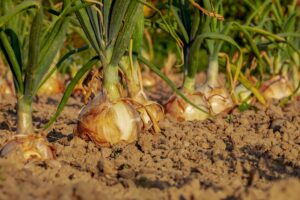How to Successfully Start a Watermelon Farm in Nigeria
Nigeria’s diverse climate and fertile soil make it an ideal location for cultivating a variety of crops, and watermelon farming is no exception. With its high demand and profitability, starting a watermelon farm can be a rewarding venture.
This article will provide a comprehensive guide on how to successfully establish and manage a watermelon farm in Nigeria.

Conducting Research:
Before diving into watermelon farming, it’s crucial to conduct thorough research. Understand the climate, soil conditions, and water availability in your chosen region. Watermelons thrive in warm temperatures with well-drained sandy loam soil. Adequate sunlight and water supply are essential for optimal growth.
Selecting the Right Variety:
There are various watermelon varieties, each with unique characteristics. Consider factors such as size, taste, and resistance to diseases when selecting the right variety for your farm. Popular varieties in Nigeria include Crimson Sweet, Sugar Baby, and Charleston Gray.
Land Preparation:
Prepare the land well in advance to ensure proper drainage and fertility. Clear the land of debris, rocks, and weeds. Conduct soil tests to determine nutrient levels, and amend the soil as needed. Create raised beds to improve drainage and prevent waterlogging.
Planting:
Watermelons can be grown from seeds or transplants. Direct seeding is cost-effective, but transplants allow for better control over growing conditions. Plant seeds or transplants in well-spaced rows, keeping in mind the recommended spacing for the chosen variety. Planting should be done at the onset of the rainy season.
Irrigation:
While watermelons require plenty of water, it’s crucial to prevent waterlogging. Drip irrigation or furrow irrigation systems are commonly used for watermelon farming in Nigeria. Ensure a consistent and adequate water supply throughout the growing season, particularly during flowering and fruit development.
Fertilization:
Watermelons are heavy feeders, and nutrient deficiencies can impact yield. Apply balanced fertilizers containing nitrogen, phosphorus, and potassium. Additionally, supplement with organic matter to improve soil structure and fertility.
Pest and Disease Management:
Common pests and diseases affecting watermelons include aphids, spider mites, and powdery mildew. Implement integrated pest management strategies, including the use of natural predators, organic pesticides, and regular scouting. Crop rotation and proper sanitation practices can help minimize disease pressure.
Weed Control:
Weeds compete with watermelon plants for nutrients and water. Employ effective weed control measures such as mulching, hand weeding, or the use of herbicides. Mulching not only suppresses weeds but also helps retain soil moisture.
Harvesting:
Watermelons are ready for harvest when the tendril closest to the fruit turns brown, and the underside of the fruit changes from shiny to dull. Harvesting too early or too late can affect the fruit’s quality. Use a sharp knife to cut the stem, leaving a short piece attached to the fruit.
Marketing and Sales:
Develop a marketing strategy to sell your watermelons. Establish relationships with local markets, grocery stores, and wholesalers. Consider creating an online presence to reach a wider audience. Ensure proper packaging and transportation to maintain the freshness and quality of your produce.
Conclusion
Starting a watermelon farm in Nigeria requires careful planning, attention to detail, and a commitment to sustainable farming practices. By following these guidelines, aspiring watermelon farmers can increase their chances of success and contribute to the thriving agricultural sector in Nigeria. With the right combination of knowledge, dedication, and hard work, a bountiful harvest awaits those willing to take on the juicy challenge of watermelon farming.



